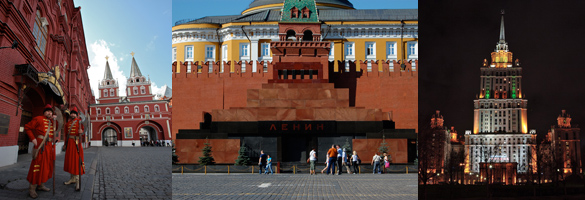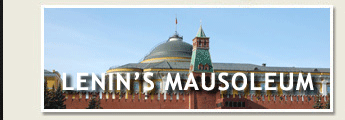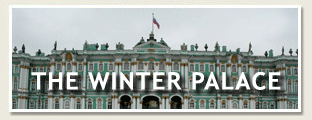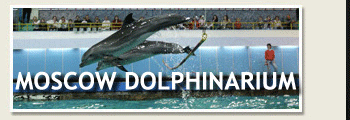 |
 |
|
|
|
||||||||||||||
|
|
|
|
||||||||||||||||
|
|
|
|||||||||||||||||
|
|
|
|||||||||||||||||
|
|
 |
 |
|
|||||||||||||||
|
|
|
|||||||||||||||||
|
|
|
|
||||||||||||||||
|
|
|
|
|
|
|
|
|
|||||||||||
|
|
Places of Attraction : Moscow
Red Square is the most famous city square in Moscow, and one of the most famous in the world. The square separates the Kremlin, the former royal citadel and currently the official residence of the President of Russia, from a historic merchant quarter known as Kitay-Gorod. As major streets of Moscow radiate from here in all directions, being promoted to major highways outside the city, the Red Square is often considered the central square of Moscow and of all Russia. Lenin's Mausoleum also known as Lenin's Tomb, situated in Red Square in Moscow, is the mausoleum that serves as the current resting place of Vladimir Lenin. His embalmed body has been on public display there since the year he died in 1924 (with rare exceptions in wartime). Aleksey Shchusev's diminutive but monumental granite structure incorporates some elements from ancient mausoleums, such as the Step Pyramid and the Tomb of Cyrus the Great. Saint Basil's Cathedral is located at the southeast end of Red Square, just across from the Spasskaya Tower of the Kremlin. Not particularly large, it consists of nine chapels built on a single foundation. The cathedral's design follows that of contemporary tented churches, notably those of Ascension in Kolomenskoye (1530) and of St John the Baptist's Decapitation in Dyakovo (1547). The Moscow Kremlin usually referred to as simply The Kremlin, is a historic fortified complex that used to be the residence of Tzar family located at the heart of Moscow, overlooking the Moskva River (to the south), Saint Basil's Cathedral and Red Square (to the east) and the Alexander Garden (to the west). It is the best known of Kremlins (Russian citadels) and includes four palaces, four cathedrals, and the enclosing Kremlin Wall with Kremlin towers. The complex serves as the official residence of the President of Russia. Armoury Chamber - A treasure-house, is a part of the Grand Kremlin Palace’s complex. It is situated in the building constructed in 1851 by architect Konstantin Ton. The museum collections were based on the precious items that had been preserved for centuries in the tsars’ treasury and the Patriarch’s vestry. Some of the exhibits were made in the Kremlin’s workshops, others were accepted as ambassadorial gifts. The museum was named after one of the oldest Kremlin’s treasury stores. The Armoury Chamber preserves ancient state regalia, ceremonial tsar’s vestments and coronation dress, vestments of the Russian Orthodox Church’es hierarchs, the largest collection of gold and silverware by Russian craftsmen, West European artistic silver, ceremonial weapons and arms, carriages, horse ceremonial harness. The State Armoury presents more than four thousands items of applied art of Russia, European and Eastern countries of IV-early XX centuries. The highest artistic level and particular historical and cultural value of the exhibits have made the State Armoury of the Moscow Kremlin a world-wide known museum. The State Historical Museum of Russia is a museum of Russian history wedged between Red Square and Manege Square in Moscow. Its exhibitions range from relics of the prehistoric tribes inhabiting present-day Russia, through priceless artworks acquired by members of the Romanov dynasty. The total number of objects in the museum's collection numbers in the millions. Ostankino Tower is a free-standing television and radio tower in Moscow, Russia. Standing 540 metres (1772 ft) tall, Ostankino was designed by Nikolai Nikitin. It is a member of the World Federation of Great Towers. Construction began in 1963 and was completed in 1967. It held the record for the tallest free-standing structure in the world for eight years, until the CN Tower was built in Toronto, Canada in 1976. A 1994 plan to increase the tower's height to 561 meters by adding an antenna was not implemented for lack of funding. Even if this antenna had been installed, the Ostankino Tower would be surpassed by the Russia Tower, a 612-metre (2,009 ft) mixed-use skyscraper currently under construction in the Moscow International Business Centre. The Pushkin Museum of Fine Arts is the largest museum of European art in Moscow, located in Volkhonka street, just opposite the Cathedral of Christ the Saviour. The founder of the museum is professor Ivan Tsvetaev. Tsvetaev persuaded the young millionaire Yuriy Nechaev-Maltsov and the fashionable architect Roman Klein of the urgent need to give Moscow a fine arts museum. Designed by Klein and Shukhov, financed by Maltsev, the museum building was constructed from 1898 to 1912. Tsvetaev's dream was realised in May 1912, when the museum opened its doors to the public. Its first exhibits were copies of ancient statuary, thought indispensable for the education of art students. The only genuinely ancient items - Moscow Mathematical Papyrus and Story of Wenamun - had been contributed by Vladimir Golenishchev three years earlier. Later the paintings were added to Pushkin Museum from the State Museum of New Western Art. These comprised Impressionist and Post-Impressionist artwork, including top works by Van Gogh, Gauguin, Picasso, and Matis. The State Tretyakov Gallery is an art gallery in Moscow, Russia, the foremost depository of Russian fine art in the world. The gallery's history starts in 1856 when the Moscow merchant Pavel Mikhailovich Tretyakov acquired works by Russian artists of his day with the aim of creating a collection, which might later grow into a museum of national art. In 1892, Tretyakov presented his already famous collection to the Russian nation. The Cathedral of Christ the Saviour is the tallest Eastern Orthodox Church in the world. It is situated in Moscow, on the bank of the Moskva River, a few blocks west of the Kremlin. The enormous gleaming golden dome and gigantic structure of the newly built Cathedral of Christ the Savior is visible from all over central Moscow and is the largest church in Russia. The original Cathedral was built by the architect Konstantin Ton between 1839 and 1881 to commemorate Russia's victory over Napoleon in the Napoleonic Wars. The church was later demolished in 1933 on Stalin's orders, but was built anew in the 1990s. The Bolshoi Theatre is a historic theatre in Moscow, Russia, designed by the architect Joseph Bové, which holds performances of ballet and opera. The Bolshoi Ballet and Bolshoi Opera are amongst the oldest and greatest ballet and opera companies of the world, respectively. The theatre is the parent company of The Bolshoi Ballet Academy, a world-leading school of ballet. The Old Arbat Street is a picturesque pedestrian street in Moscow, running west from Arbat Square (which is part of the Boulevard Ring) towards Smolenskaya Square (which is part of the Garden Ring). The Old Arbat has the reputation of being Moscow's most touristy street, with lots of entertainment and souvenirs sold. It is distinct from the New Arbat, a street running parallel to it and lined with Soviet skyscrapers made of steel, concrete, and glass. Tverskaya Street, known as Gorky Street between 1935 and 1990 and (unofficially) Piterskaya in the preceding decades, is the main and probably best-known radial street of Moscow, Russia. The street runs from the central Manege Square north-west in the direction of Saint Petersburg and terminated at the Garden Ring, giving its name to Tverskoy District. The route continues further as First Tverskaya-Yamskaya Street, Leningradsky Prospekt and Leningradskoye Shosse. The Moscow Metro, which spans almost the entire Russian capital, is the world's second most heavily used rapid-transit system. Opened in 1935, it is well known for the ornate design of many of its stations, which contain outstanding examples of socialist realist art. In total, the Moscow Metro has 292.2 km (181.6 miles) of route length, 12 lines and 177 stations; on a normal weekday it carries over 7 million passengers. Passenger traffic is considerably lower on weekends bringing the average daily passenger traffic during the year to 6.8 million passengers per day. The Moscow Metro is a state-owned enterprise. Sparrow Hills is a hill on the right bank of the Moscow River and one of highest points in Moscow with an altitude up to 220 m (60–70 m above the river level). The observation platform, which gives a good panoramic view of the city, is situated on a steep bank 85 m above the river (200 m above the sea level). The Luzhniki Stadium (formerly, the Lenin Stadium), where the opening and closing ceremony for the 1980 Summer Olympics took place, is right below across the Moskva River. Next to it is the beautiful Novodevichy Convent, with its Naryshkin Baroque towers. Sergiev Posad 75km to the northeast of Moscow lies this town of Sergiev Posad (Zagorsk in the Soviet era). Although it is nowadays an industrial centre with a population of over 100,000, its fame rests on the Trinity Lavra of St. Sergii (a Lavra is the highest rank of Orthodox monastery, and there are only four in all Russia), the Russian Orthodox equivalent of the Vatican, which has a complex of medieval buildings to rival those of the Kremlin. This imposing, white-stone building, with unusual sloping walls and gold dome, became a blue-print for Russian church architecture and the inspiration for the Kremlin's Cathedral of the Assumption. In 1458 a brick chapel was added to house the tomb of Sergii's successor, Nikon of Radonezh. Inside the Cathedral there is a silver shrine containing the relics of St. Sergii, and an iconostasis with many works by Andrei Ruble. |
|
|
|||||||||||||||
|
|
|
|
||||||||||||||||
 |
 |
 |
|
|||||||||||||||
|
|
||||||||||||||||||
|
|
|
|
|
|
|
|
|
|
|
|
|
|
|
|
|
|
|
|
